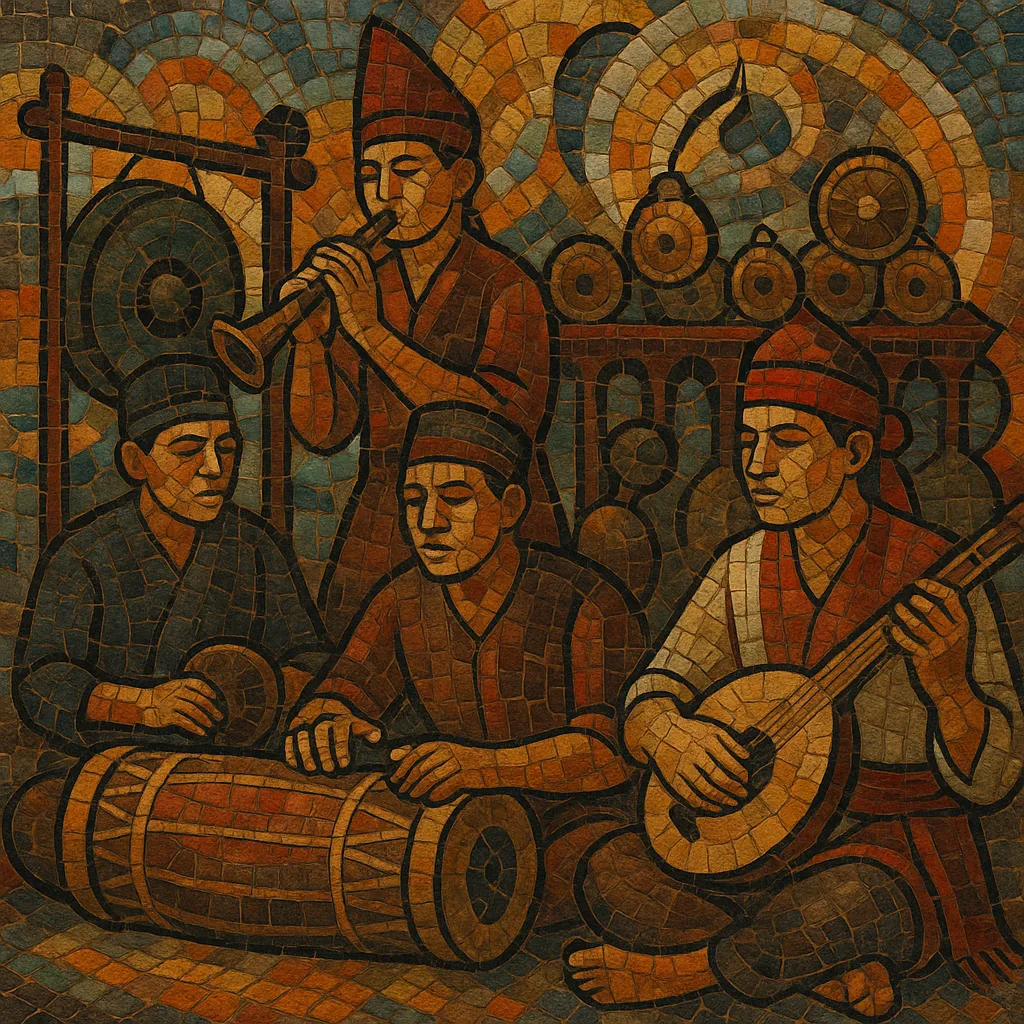Gondang is the ceremonial ensemble music of the Batak (especially Toba Batak) people of North Sumatra, Indonesia. The term can refer both to the ensemble itself and to individual pieces (repertoires) performed for social and ritual functions.
Two principal ensemble types are recognized: Gondang Sabangunan, a powerful outdoor set dominated by a five-tuned drum battery (taganing), a large bass drum (gordang), a quartet of tuned gongs (ogung), a double-reed shawm (sarune bolon), and a timekeeping idiophone (hesek); and Gondang Hasapi, a more intimate string ensemble centered on the two-string hasapi lute, sulim bamboo flute, small gongs, and frame drums. The music interlocks with the tortor dance and with call-and-response interactions between musicians, dancers, and ceremonial leaders.
Gondang is inseparable from Batak social philosophy (dalihan na tolu) and life-cycle events—weddings, funerals, clan gatherings, and thanksgiving rituals—where specific pieces are invoked to bless, honor, lament, or energize the community.
Gondang developed as the ritual and social music of the Batak peoples in North Sumatra. Its roots predate colonial contact, functioning as sonic offerings to ancestors and as a sonic framework for the tortor dance. Repertoire titles often encode purposes (e.g., to summon, honor, bless), and performance order is negotiated in real time between ceremonial leaders and musicians.
By the 19th century, two main forms were prominent:
• Gondang Sabangunan: an outdoor ensemble featuring taganing (five tuned drums) and gordang (bass drum), a set of tuned gongs (ogung), sarune bolon (double-reed shawm), and hesek (metal or wooden timekeeper). Its timbre is penetrating and festive, suited to large open-air ceremonies. • Gondang Hasapi: a chamber-like ensemble centered on the hasapi lute (often two sizes), sulim (end-blown bamboo flute), and small gongs/drums, with a more lyrical, intimate sound for household or smaller-scale rites.In the late 19th and early 20th centuries, missionization and colonial presence shifted ritual contexts; some rites were curtailed or reframed. Yet gondang persisted, increasingly appearing at civic events and staged performances. In the late 20th century, cultural institutions, museums, and university ethnomusicology programs helped preserve and document the tradition. Today gondang is performed both in its original ceremonial settings and in staged heritage contexts, with repertoire adapted to contemporary social needs while retaining its core dialogic relationship with tortor and community leadership.


